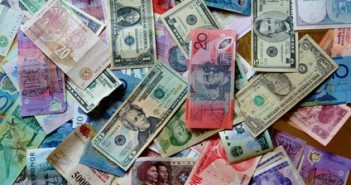When traders first start out on their journey, they either tend to stick to a few major pairs, or they trade every instrument they possibly can. The Majors are particularly popular because they have the lowest spread and are easily predictable with the simplest technical analysis techniques.
The majors are the 7 most traded currencies worldwide against the USD, so that would be AUDUSD, EURUSD, USDJPY, GBPUSD, USDCAD, USDCHF and NZDUSD. The thing to remember with the minors is that while they have lower liquidity and higher spreads, they also have greater volatility and greater chances for significant returns.
The majors maintain their popularity through a mixture of predictability and high liquidity, but it is these very factors that make them a poor choice for speculative investment. To make any significant profit on major pairs, you need a lot of capital and a lot of leverage. They remain relatively stable, and unless you have a lot of money invested or leveraged, the minor fluctuations in price equate to pennies or fractions of pennies, which is not a brilliant way to make a living through trading.
While the minors have a reputation for being difficult to trade, especially as a day trader, there are techniques that will allow you to trade the minors while still maintaining your preference for the majors. The minors aren’t that dissimilar to the majors – you are already exposed to their price movements against the USD, so the information is not so far beyond what you would already use to trade the dollar.
When something happens with the USD – like the recent strength and plateau it has shown against the other major pairs – it will affect all currencies with which it is traded. It is at times like these that diversifying your portfolio is an excellent idea.
The argument for sticking with major pairs has often been that their highest volumes trading times are North American and European ‘awake’ times. However, most of the minors also see their highest trading volumes in North America and Europe trading times, so that is not a valid reason for bypassing them.
For comparison, the chart below is a comparison of some majors compared with minors crossed with JPY. The percentage indicates the potential returns that could have been made on that particular currency trade.
If you look at the historical data, you can see that only two currencies, in two different years (AUD 2013 and CHF 2011), didn’t provide better potential for profitable trades when traded as a minor pair, rather than a major. It is something to consider if you want to make trading your day job.
In summary, it may not be as easy to trade the minors, and if you want to trade technically it may require a little more work doing the analysis, but there is profit to be made in making that extra effort. You may not even realize it, but if your technical analysis of the majors makes you decide to go long on EURUSD and USDJPY, it’s quite probable that you could open a buy trade on EURJPY and make a significantly better return.
As long as you have exposure to the minors in your trading portfolio, you have the potential to make significantly improved returns than if you stick with the majors. Don’t let the fear of less technical predictability stop you from a potential profit.
Get the 5 most predictable currency pairs
